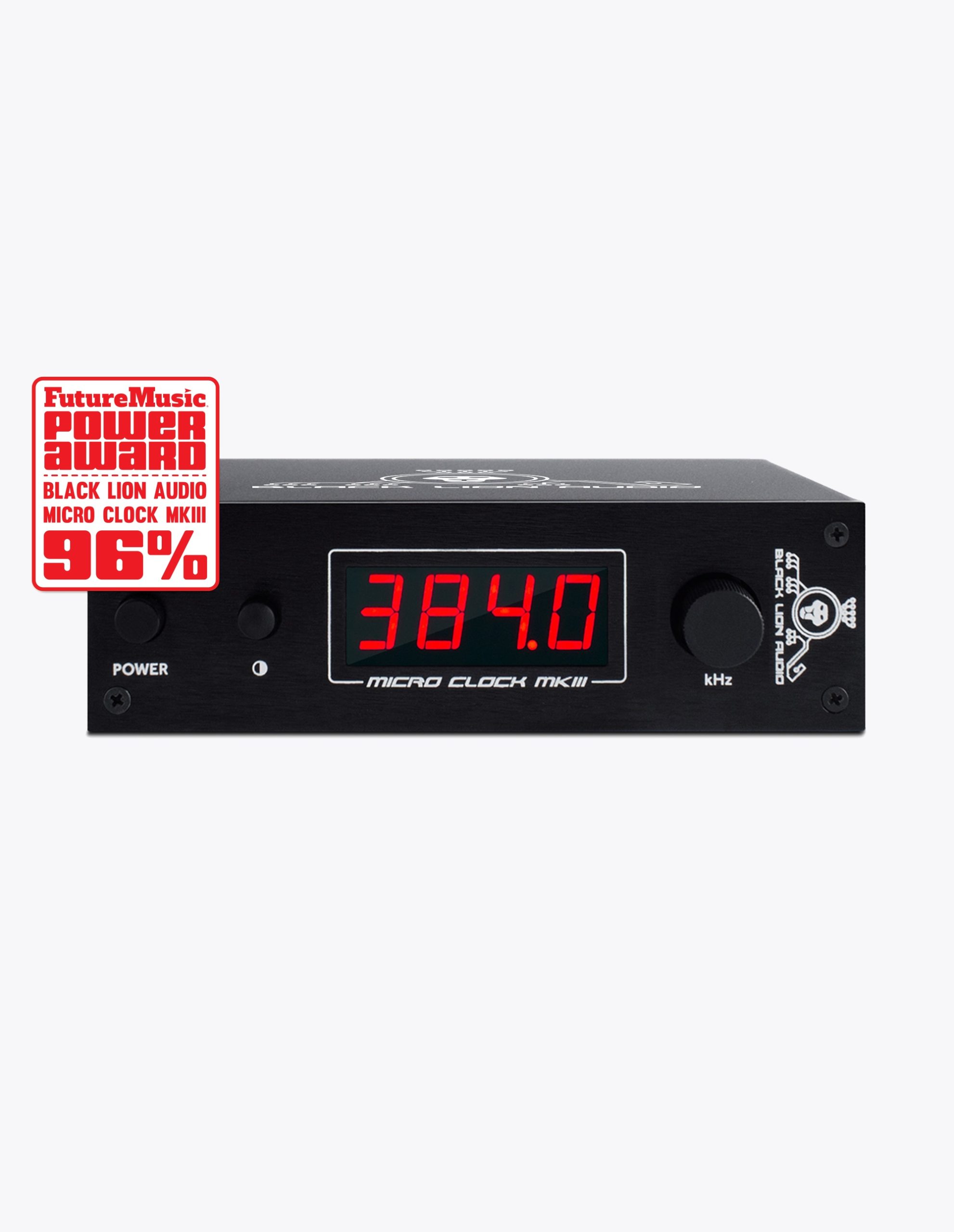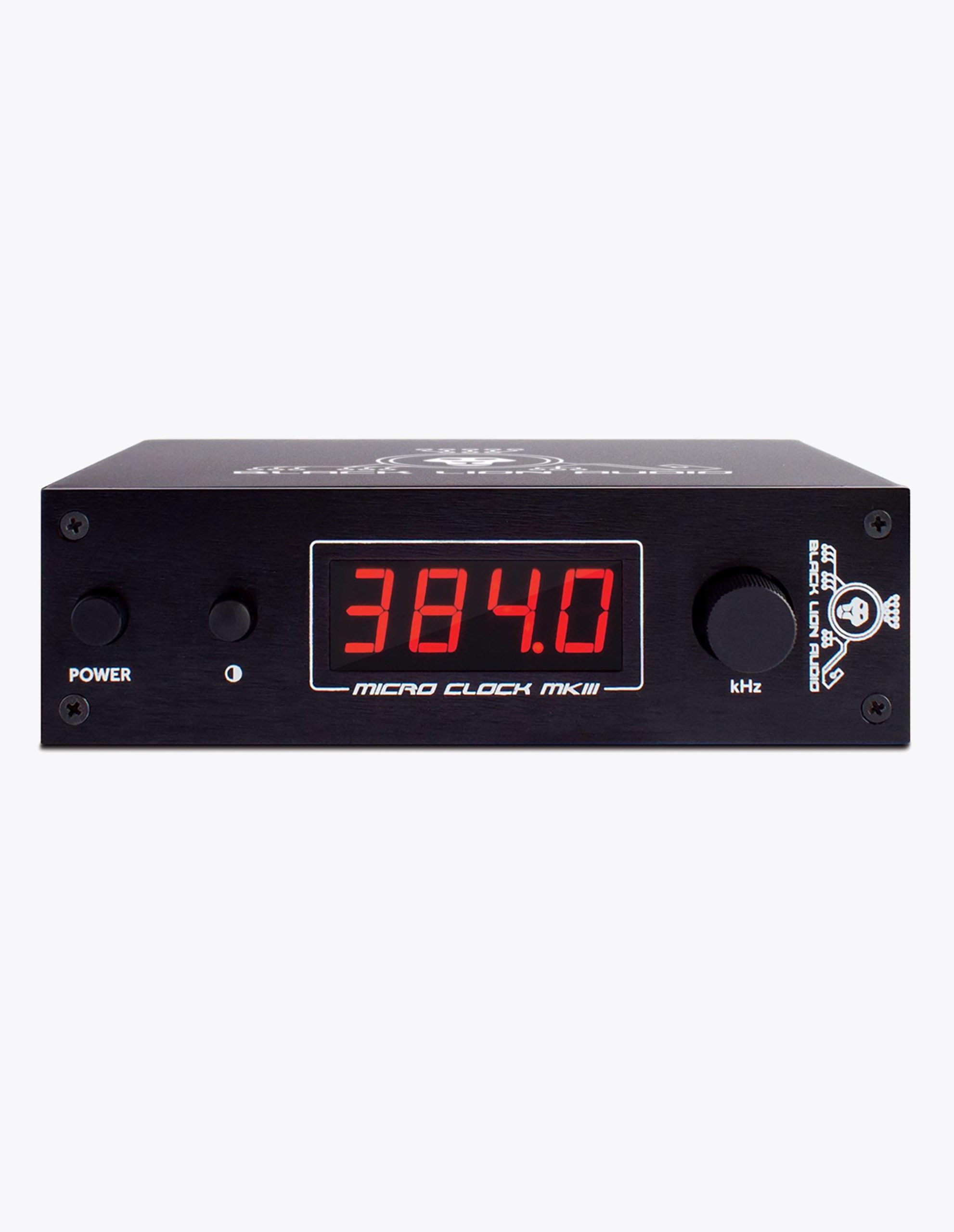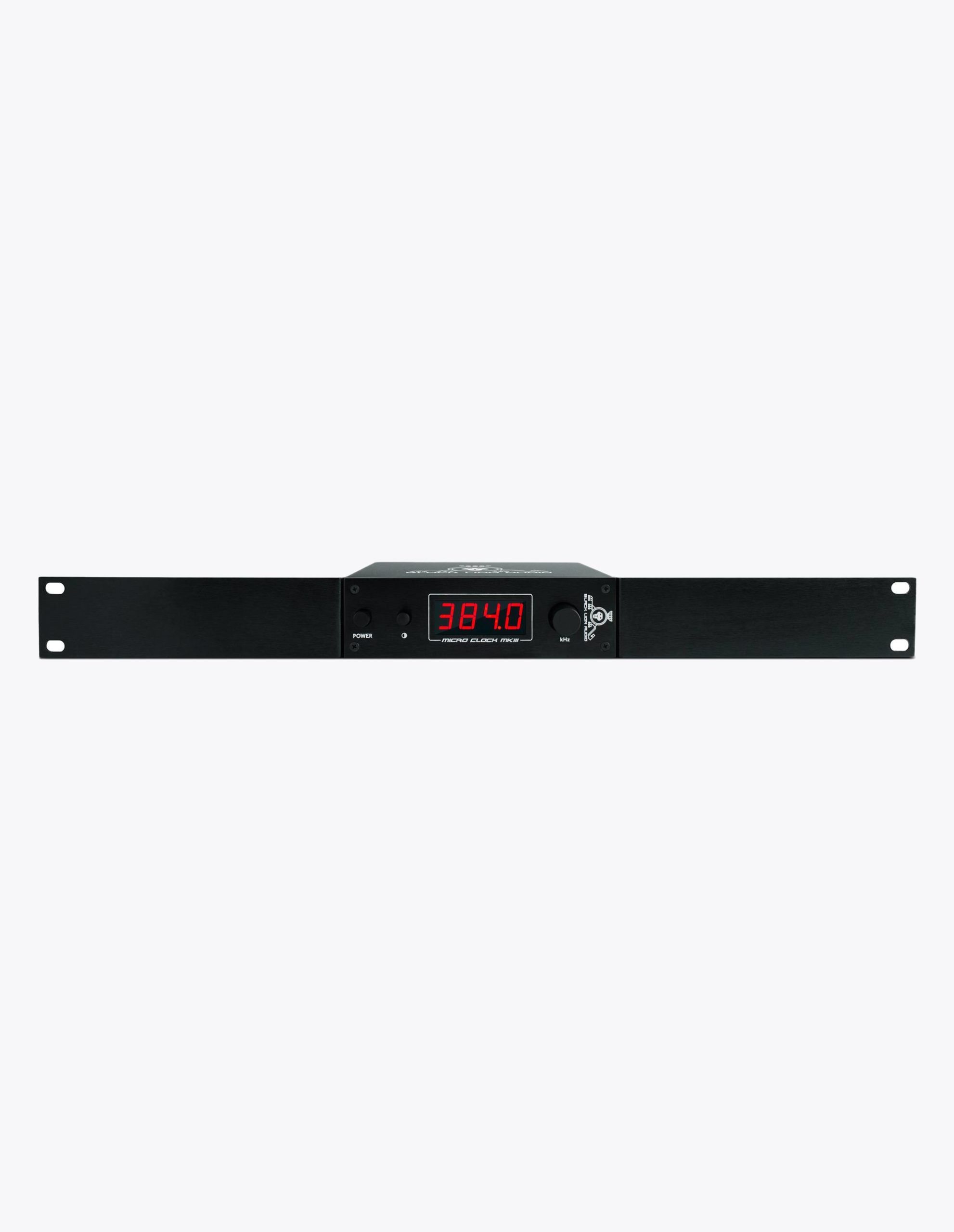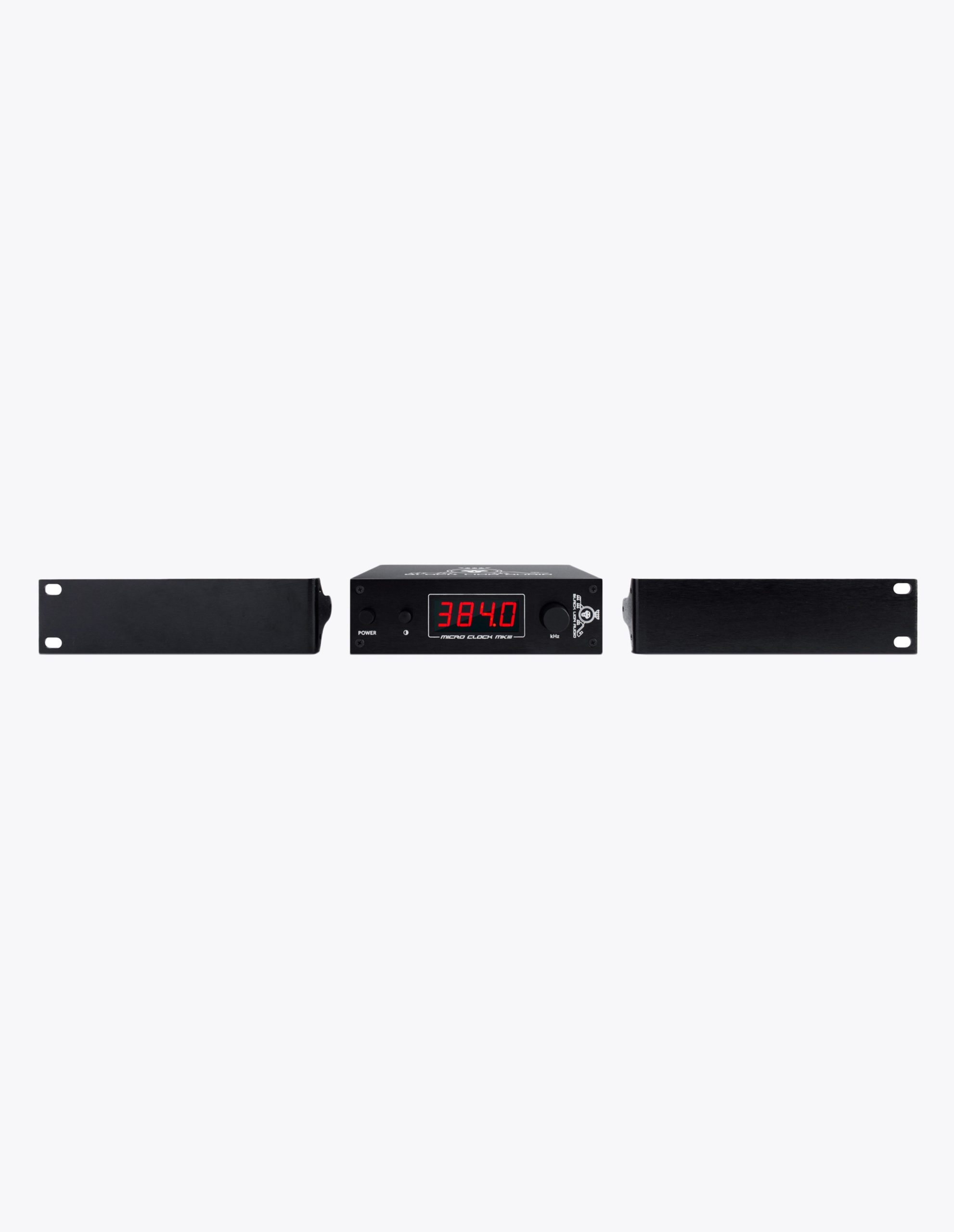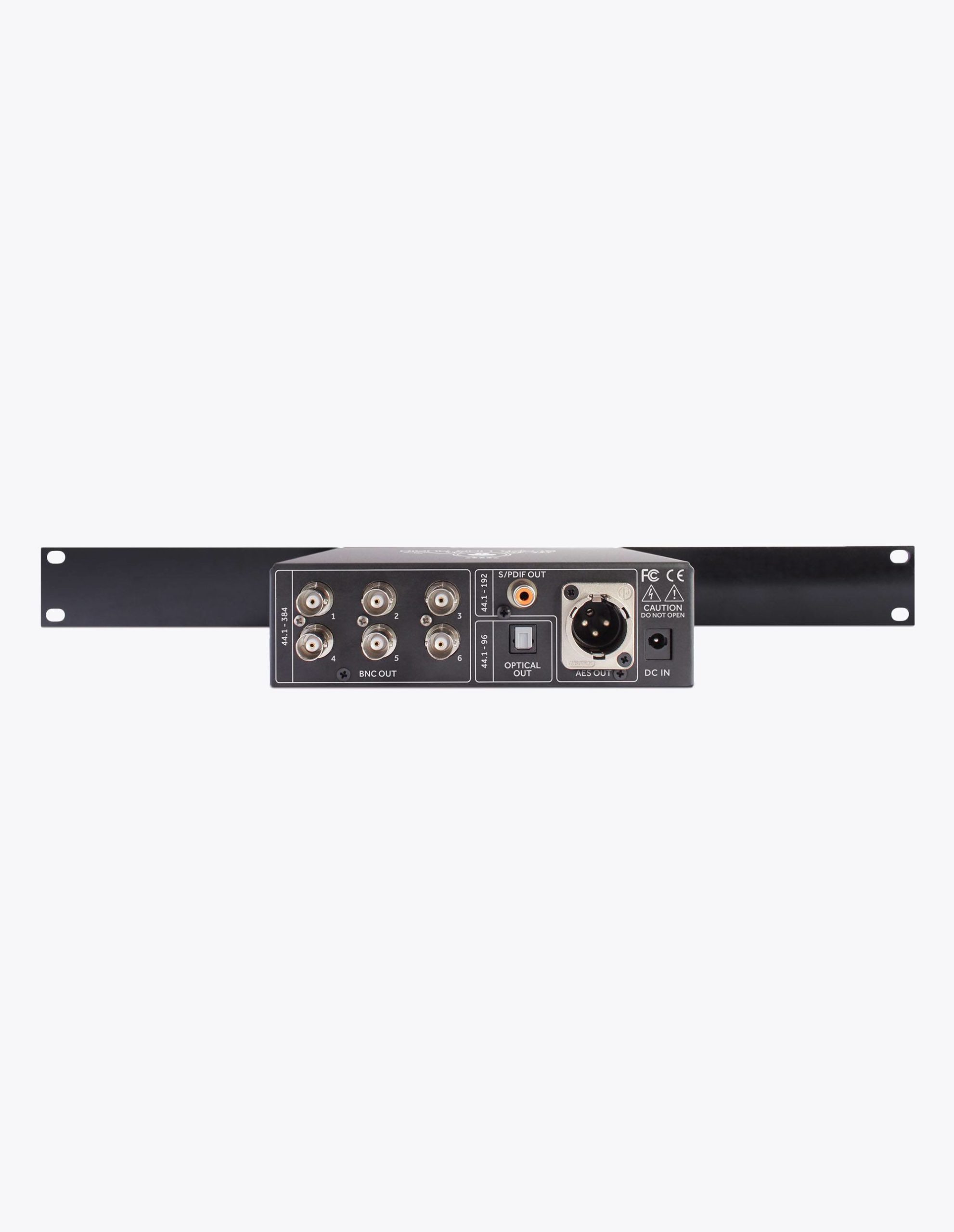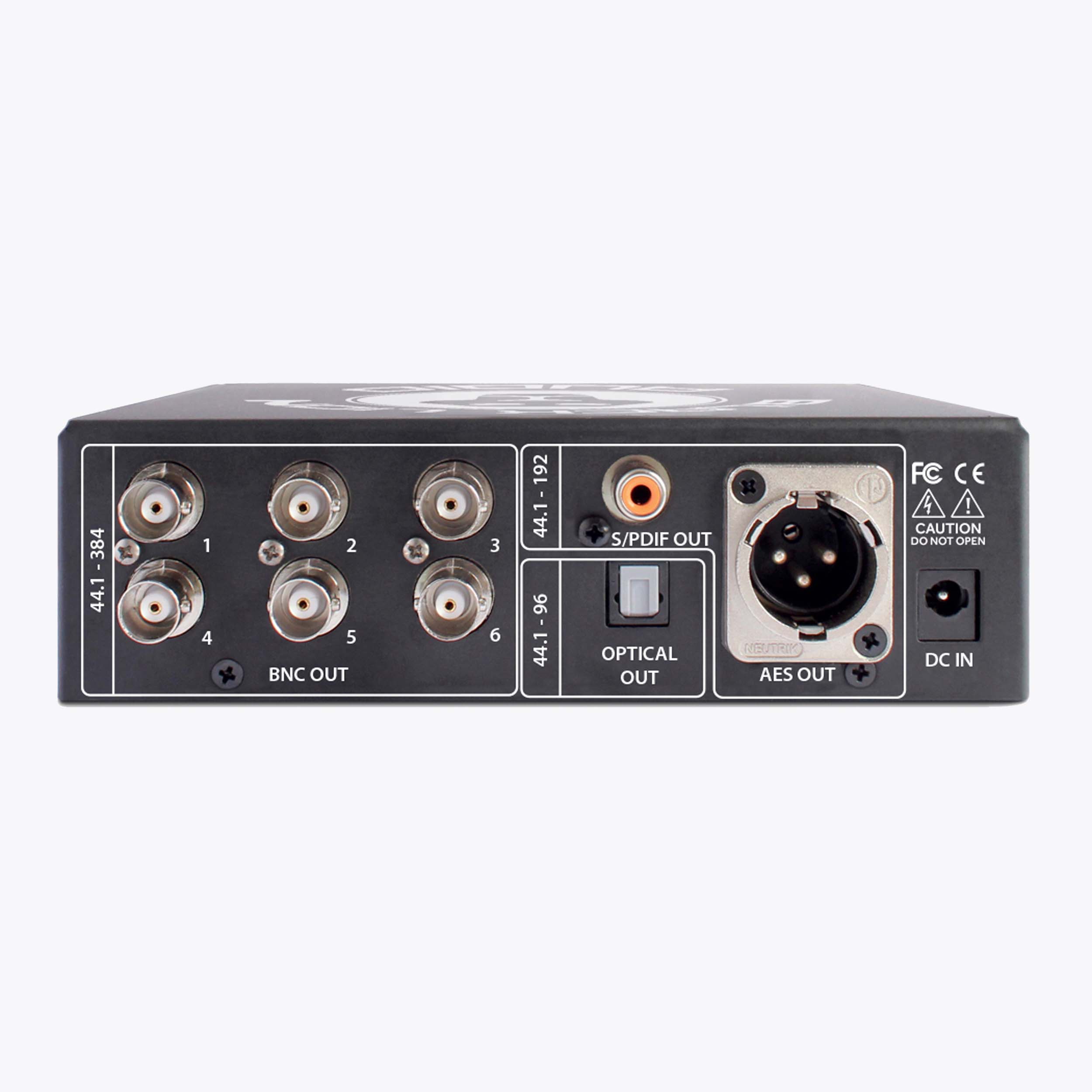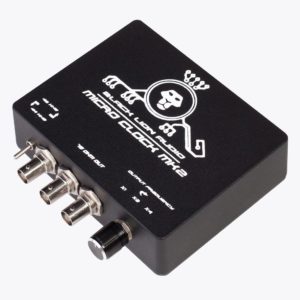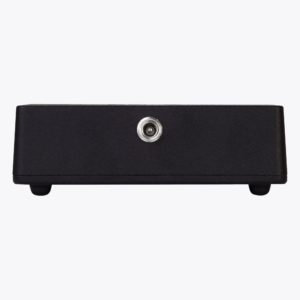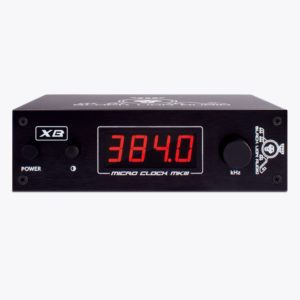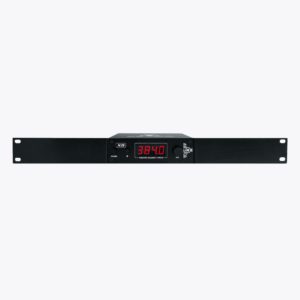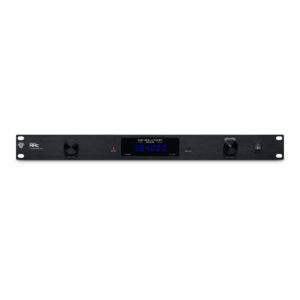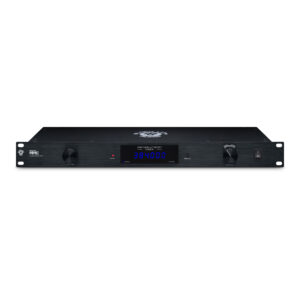Micro Clock MKIII
$799.00
The Micro Clock MKIII is the culmination of almost 10 years of research involving jitter-reducing, harmonic-enhancing design techniques not found in any other master word clocks on the market. It not only can sync all of your digital audio gear together, but can significantly improve the sound quality as well. It may be the most significant single upgrade you can make to your digital audio setup. Get ready to hear what you’ve been missing!
The Micro Clock MKIII is a significant redesign of its predecessor, the Micro Clock MKII. Core technological improvements include lower-jitter crystal oscillators, higher-quality galvanic transformer isolation in the signal path, dedicated output drivers with better isolation, higher-precision signal division, and much heavier noise filtration throughout the circuit. All of this results in a more robust, lower-jitter clock signal than the Micro Clock MKII, with even more desirable harmonics in the clock’s spectral band that impart an undeniable musical quality to the conversion process. The feature set has expanded to include an LED frequency display, six BNC outputs capable of up to 384kHz, AES and RCA S/PDIF outputs capable of up to 192kHz, an optical S/PDIF output capable of up to 96kHz, and removable rack ears.
Additional information
| Weight | 4 lbs |
|---|---|
| Dimensions | 13 x 13 x 5 in |
FRONT
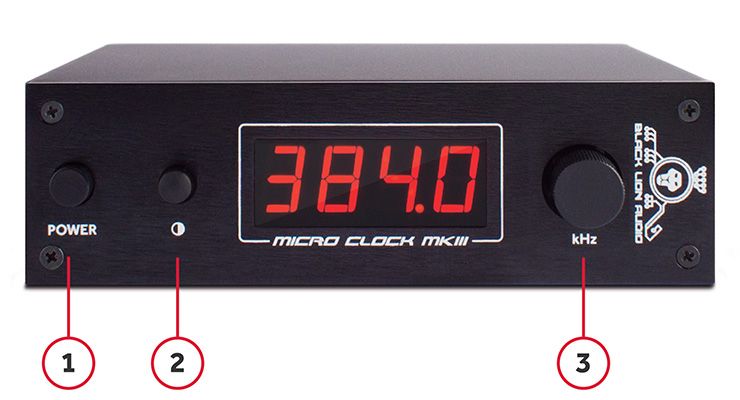
- POWER: engage to turn unit on, disengage to turn unit off
- DISPLAY CONTRAST: engage to dim display, disengage to brighten display
- FREQUENCY (kHz): rotate three clicks at a moderate speed to unlock and cycle through output frequencies as indicated on the display
BACK
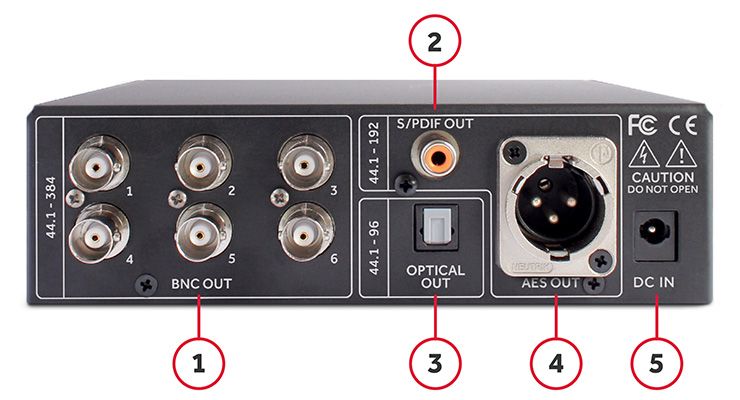
- BNC Out: 5V, 75Ω output; termination is optional (44.1kHz – 384kHz)
- S/PDIF Out: unbalanced RCA output (44.1kHz – 192kHz)
- Optical Out: optical S/PDIF output; does not support ADAT (44.1kHz – 96kHz)
- AES Out: balanced XLR output (44.1kHz – 192kHz)
- DC In: 9VDC center pin positive, input jack
FEATURES
- Patented Black Lion Audio clocking technology
- Ultra-low jitter, harmonically-enhanced word clock signal generation
- Dimmable frequency display
- 8 selectable sample rates (44.1kHz, 48kHz, 88.2kHz, 96kHz, 176.4kHz, 192kHz, 352.8kHz, and 384kHz)
- 6 BNC outputs with dedicated output drivers for maximum isolation
- RCA S/PDIF output
- Optical S/PDIF output
- AES output
- Full & 1/2 rack removable rack ears
- Locking frequency selector knob
SPECS
Jitter: 1.92pS RMS (BNC outputs)
Outputs: 6 BNC, 1 XLR AES, 1 RCA S/PDIF, 1 Optical S/PDIF (recommended max. cable length = 1,000ft of high quality, 75Ω coaxial cable)
- BNC: 75 Ω, 5V unterminated
- RCA S/PDIF: 75 Ω, unbalanced
- AES XLR: 110 Ω, balanced
Clock Frequencies
- BNC (kHz) – 44.1, 48, 88.2, 96, 176.4, 192, 352.8, 384
- RCA S/PDIF & AES (kHz) – 44.1, 48, 88.2, 96, 176.4, 192
- Optical S/PDIF (kHz) – 44.1, 48, 88.2, 96
Power: 9VDC (6W power consumption)
Power connector: 2.1mm barrel connector with 5.5mm outer diameter (center pin positive)
Weight: 2.2lbs
Dimensions: 6.5”L x 6”W x 1.75”H (without rack ears installed)
Shipping Dimensions: 13x13x5
Shipping weight: 4lbs
RAVES
“Will your $1000 investment pay off in terms of the final quality of your music[?] According to our five evaluators in our long term test, as well as our Editor-In-Chief, the answer is a resounding ‘Yes!’ The BLA [Micro Clock] mkIII simply made almost every studio sound better. From a project studio, to a mastering suite specializing in electronic music, plugging in the mkIII enhanced the three attributes mentioned above [soundstage, center image, & bass]. Even in studios with more sophisticated gear, the mkIII made a difference.”
“For electronic musicians, ‘it’s all about the bass,’ and any gear that’s going to enhance your low end, should be taken seriously. This is the one area that every one of our reviewers cited as ‘something special.’ As one of our taste-testers aptly put, ‘what the [mkIII] did to the low end defies gravity. It actually separated the 909 kick from the creamy Moog bass…something I was not able to accomplish to my satisfaction in the mix.’”
– FutureMusic, read full review here
“…for just under $1000, the Micro Clock MkIII is an excellent offering, hopefully signaling the beginning of a price reduction for superior clocking that will, eventually, allow more and more recordmakers to get into better, jitter-free digital audio systems, putting their inferior, prosumer-grade systems finally to rest. The world of recorded sound needs that, badly.”
– Allen Farmelo, Tape Op, Issue #109, Page 76
“I’ve been with the Micro Clock from version 1 onward. Each version was a decided step up from its predecessor. Having logged the most hours with the Micro Clock II, I approached purchasing the Mark III with a little hesitation. After all, how much better could it sound than my trusty II? I made some high profile recordings with the II, including Van Dyke Parks’ “Songs Cycled” album, and numerous guitar sessions for shows such as “The Walking Dead,” “Black Sails,” and “Eureka.”
I also completed my recently released third solo album, “Time Sensitive” with the II.The answer as to how much better the Mark III sounds lies in a current project that I’m mixing, and know intimately. The tracking and most of the over-dubs for this Americana-styled album were done with the Mark II and my Universal Apollo Quad silverface. Bringing the Mark III in at the mixing stage has been something of a revelation to me. It’s not that it sounds so much better than the II. The analogy that I’ve been using to describe the differences is more along the lines of having a more powerful microscope (telescope if you prefer). I’m able to “see” in better detail aspects of the mix that were eluding me somewhat, including the ever-important left/right relationship, as well as the “Phantom Center.”
For example, I’ve found that I’m using less eq now, and probably a little less compression as well. I’m now able to hear that I went slightly too far in the 4k range on an accordion. The sound of the accordion was bothering me before, but I wasn’t sure what the exact culprit was. In addition, the reverb eq is more prominent with the III. Those details really add up to bringing a little order to the madness that often accompanies a mix.
So, do I now have to re-mix everything I’ve ever done with the Mark III? No, but it certainly could have saved me hours of guessing at what is now very clear.”
– Ira Ingber
“The Micro Clock MKlll is the crazy glue of all word clocks. The smoothness of the high end, the tightening of the low end, the superb stereo imaging, and even the detail of reverb tails makes the Micro Clock MKlll my go-to word clock for any mixing situation.”
– Courtney Taylor

